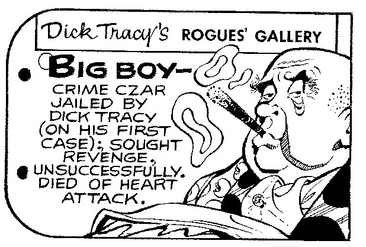| Big Boy | |
|---|---|
 | |
|
First Appearance: |
October 4th, 1931 |
|
Known Associates: |
Crutch (Deceased) |
|
Can Be Found: |
The Complete Dick Tracy Vol. 1 |
|
Created By: |
|
“Big Boy” was the leader of a large underworld organization. He was sometimes referred to as the King Cobra.
In his prime, Big Boy was a large imposing figure, slightly heavyset, with dark eyebrows and several gold teeth.
Early Activities
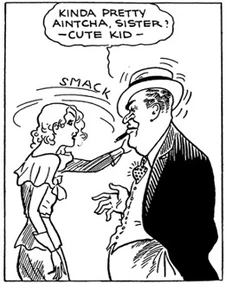
Big Boy ran his criminal enterprise from the city in which Dick Tracy lived. One night, Big Boy sent two of his men to rob the home of Emil Trueheart, a delicatessen owner and father of Tracy’s girlfriend Tess. The robbers took Emil’s saving, shot him, and kidnapped Tess. Emil died from the injury and Tracy, who was present, swore revenge.Tess was brought to Big Boy’s hideout where he was impressed by her good looks. She was repulsed by him. Big Boy decided to enlist Tess in his next crime, the robbery of a payroll. Big Boy believed that no one would suspect that an innocent-looking young blonde woman was driving the getaway car.
Tracy, appointed to the Detective Bureau of the City Police by Chief Brandon, had gone undercover to find Tess and was able to extricate her from Big Boy’s scheme. After that, Big Boy continued to operate behind the scenes, often using lieutenants like Ribs Mocco and his sometimes-girlfriend Texie Garcia. As Tracy began to more and more effectively combat his criminal endeavors, Big Boy became increasingly desperate.
The Waldorf Kidnapping and Capture
Big Boy’s next big plot was the kidnapping of Buddy Waldorf, the son of wealthy financier John H. Waldorf. Big Boy and a female accomplice abducted the child and planned to take him away on a cruise ship, the Alonia. Tracy disovered this plan and managed to board the Alonia just before is left port. Big Boy learned that Tracy had tracked him down, and he was eventually able to ambush Tracy and throw him overboard. Tracy survived and was able to get back on board the Alonia. With the help of the crew, Tracy rescued Buddy Waldorf and administered a serious beating to Big Boy (May 19, 1932).
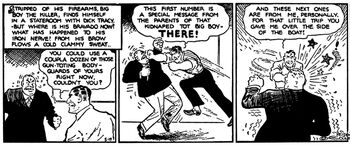
Prison, Escape and Return
Big Boy went to jail, but he was not completely absent from Tracy’s life. After a failed escape attempt, Big Boy continued to direct certain underworld activities from prison through his agent, “Boss” Jim Herrod. When Herrod was discovered, Big Boy refused to help him. Herrod was eventually killed and Big Boy escaped prison soon after that, resuming control of his organization with the help of his lawyer Spaldoni.
When the author Jean Penfield prepared the manuscript of a book that detailed his criminal activities, Big Boy tried to arrange for her to be killed. The potential hit man, Jimmy White, failed and Big Boy was implicated in the attempted murder. He was apprehended and sent back to jail.
The Open Contract: Big Boy's Revenge
After serving 18 years in jail, Big Boy was eventually released. His local Outfit was now revealed to be part of The Apparatus, and it was further revealed that he was not merely a member of the nationwide organzation's governing Council, but was, by far, the most powerful and influential member of that Council. Though control of the Apparatus was lost to him when Tracy successfully sent him to prison, Big Boy was still respected and influential.
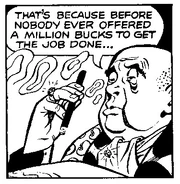
Big Boy learned that he was dying and wanted revenge on Dick Tracy before he died. He issued a one million dollar Open Contract on Tracy, meaning that anyone who successfully killed Tracy could collect the money. Several attempts were made on Tracy’s life, one of which claimed the life of Moon Maid, Tracy’s daughter-in-law. The other leaders of the Apparatus believed that the contract would attract too much attention to their activities, and counter-acted it by issuing a one million dollar bounty on anyone who made any further attempt on Tracy’s life. Big Boy, angry and desperate, contacted Johnny Snow, aka The Iceman, a killer for hire. Big Boy believed that Snow would not fear the Apparatus’ bounty and would kill Tracy just for the challenge and the chance at glory. Snow took the contract, but failed to kill Tracy. Snow himself was shot and died in the attempt. Before he expired, he revealed who had hired him.
Tracy and Sam Catchem arrived at Big Boy’s home with a warrant for his arrest mere moments before Big Boy himself died of a heart attack. Sam observed the irony that the man who had fostered so much violence during his life finally died at home in bed.
Big Boy's Legacy
Many years later, Dick Tracy encountered a young criminal who went by the name Little Boy and claimed to be Big Boy's grandson. It was eventually revealed that this claim was untrue and that no familial connection actually existed between the pair.
Appearances in Other Media
Archie's TV Funnies
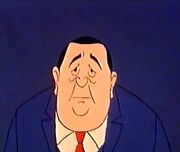
Big Boy was a character in the "Dick Tracy" segments of the 1971 animated television series "Archie's TV Funnies", produced by Filmation Associates. Boy Boy's appearance somewhat resembled his depiction in the comic strip. He was portrayed as part of a large, international criminal organization, and had arranged several daring jailbreaks.
Movie Continuity
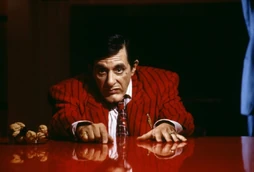
Alphonse “Big Boy” Caprice was the primary antagonist in the 1990 Dick Tracy feature film. He was played by actor Al Pacino. Pacino received an Academy Award nomination for Best Supporting Actor for his performance (though he did not win that year).
In the film, Big Boy was an ambitious former enforcer for Lips Manlis, a crime boss. Big Boy took over Lips' territory, including the Club Ritz. Because of his keen intellect, Big Boy was able to avoid prosecution for his crimes.
Big Boy attracted the attention of Dick Tracy, who became determined to put an end to Big Boy’s operation. Big Boy united the various gang lords under his leadership, and attempted to bribe Tracy. Tracy refused, and escaped the death-trap in which Big Boy and his lieutenants (Flattop and Itchy) had left him. Big Boy’s conference room was later bugged by Tracy, who then managed to counter all of Big Boy’s activities.
Desperate, Big Boy agreed to pay the mysterious figure called “The Blank” to remove Tracy as an opponent. Once Tracy was framed for murder, Big Boy enjoyed unprecedented success.
On New Year’s Eve, The Blank kidnapped Tess Trueheart and planted her in the Club Ritz, intending to frame Big Boy for the crime. Big Boy learned of this and, fearing reprisal from Tracy, took Tess through a series of secret escape passages. Tracy, who had been released from jail, tracked Big Boy to the control room of a lift bridge, where the two men and the Blank had a final confrontation. Big Boy shot the Blank, who was revealed to be the singer Breathless Mahoney. Tracy and Big Boy struggled, and Big Boy fell to his death into the gears of the lift bridge. Tracy rescued Tess.
Notes
- Big Boy’s physical appearance in the film bears little resemblance to his appearance in the comic strip, looking more like Sketch Paree than Big Boy as drawn by Chester Gould. Al Pacino reportedly had some input in designing the character’s look, which supposedly influenced his acting choices, and it has been suggested that he based the look partially on fellow actor Robert DeNiro. Because the makeup made him nigh-unrecognizable (even to other cast members during filming) he initially opted to work under a pseudonym. Because of this, Topps' official souvenir magazine credited him as "Guido Frascatti".
- In the film, Big Boy’s given name of Alphonse Caprice was inspired by real-life mobster Al Capone. In Max Allan Collins' novelization, Caprice was born "Alphonse Capricio," eventually choosing to shorten his surname.
- Big Boy's last name was never stated or referred to in the comic strip.

- In the "Plainclothes Tracy" audition strips, the gangster kingpin was referred to as "The Cleaver," and was depicted as being identical to the character who would eventually be referred to as "The Big Boy." Though these original audition strips were never used in the strip, the basic situation, the villain hidden in Texie Garcia's apartment, cornered by Tracy and his men, escapes through a secret passage, leaving Texie to hold the bag, was reused by Gould in newly drawn strips that were published from November 30, 1931, through December 4, 1931.
- For roughly the first six or seven months of the strip's existence, the daily strips and the Sunday strips were run separately, rather than being part of the same continuity. In addition to being the villain of the first featured daily strip story, the villain for the "Buddy Waldorf Kidnapping" sequence from April through May of 1932, and the villain of the "Big Boy's Escape" sequence from October 1933 through February 1934, Big Boy was the featured villain for five of these self-contained Sunday stories, on On October 4, 1931 (his very first appearance in the strip), on October 11, 1931, on May 29, 1932, on June 5, 1932, and on June 26, 1932. This makes Big Boy Gould's single most frequently used villain, outstripping even Stooge Viller (originally hired by Big Boy's Outfit) and Steve the Tramp.
- Aside from stories in which he was the featured villain, the Big Boy was the "grey eminence" behind almost every bit of criminal activity Tracy encountered during the first three of four years of the strip, even when he was in jail.
- In the prose short story "Murder is My Hobby" by Sgt. Jim Doherty (which was available to read on the PLAINCLOTHES website), Big Boy was said to be the half-brother of the Famon brothers - Cut and Muscle. However, this has not been established as official canon.
